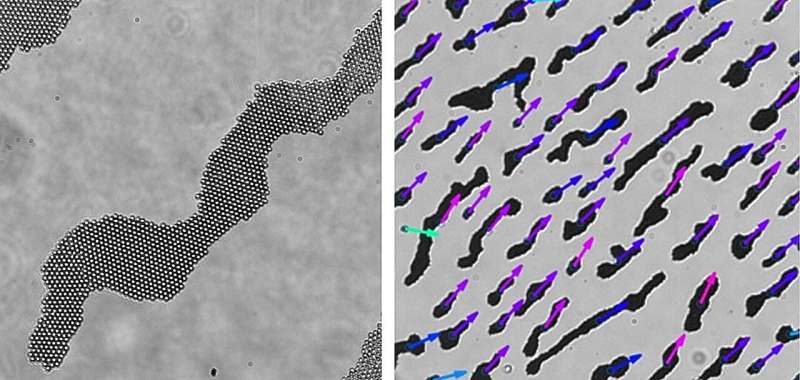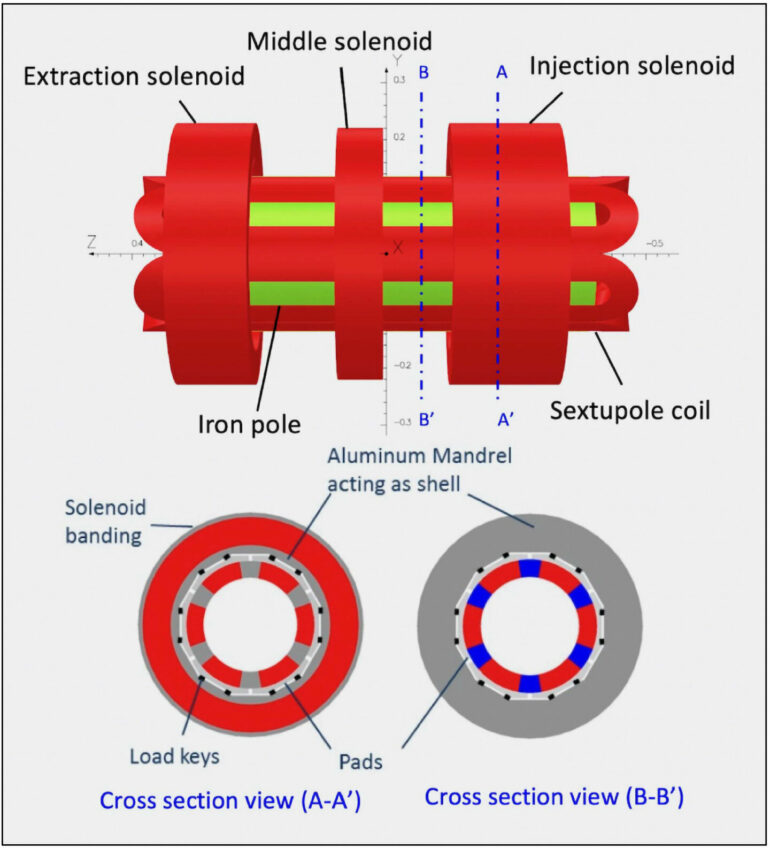Particles that are larger than regular molecules or atoms yet remain invisible to the naked eye can form a variety of useful structures, including miniature propellers for microrobots, cellular probes, and steerable microwheels designed for targeted drug delivery.
Lisa Biswal’s team of chemical engineers at Rice University has found that exposing a certain class of such particles—micron-sized beads endowed with a special magnetic sensitivity—to a rapidly alternating, rotating magnetic field causes them to organize into structures that are direction-dependent or anisotropic. This discovery is important because anisotropy can be adjusted to develop new, customizable material structures and properties.
“Our key finding is that by alternating the direction of the rotation of the magnetic field after each revolution, we can create an anisotropic interaction potential between particles, which has not been fully realized before,” said Aldo Spatafora-Salazar, a chemical and biomolecular engineering research scientist in the Biswal lab and one of the lead authors on a study about the research published in Proceedings of the National Academy of Sciences.
Dana Lobmeyer, the other first author on the study, explained that the particles under scrutiny in the study are collectively known as superparamagnetic colloids whose responsiveness to magnetic fields makes them a popular building block for high-performance materials with tailored functionality.
“This discovery is significant for bottom-up advanced materials design, especially because we honed in on an aspect of the interaction between the colloids and magnetic fields that is usually overlooked—magnetic relaxation time,” said Lobmeyer, a Rice doctoral alumna advised by Biswal.
The relaxation time refers to the delay in the beads’ magnetic response to changes in field direction. The researchers hypothesized that this delay combined with the effect of the alternating magnetic field affects the beads’ interactions, causing them to arrange into a crystal lattice in two dimensions and to form elongated, aligned clusters in three dimensions.

Microscopy images of cluster formation (left) and graphic representation of cluster alignment (right). © Biswal lab/Rice University
“The delayed magnetic response, or magnetic relaxation time, of superparamagnetic beads was previously considered negligible, but what we found is that taking it into account and coupling it with the effect of the alternating magnetic field is a powerful way to exercise precise control over the particles,” said Biswal, the corresponding author on the study and Rice’s William M. McCardell Professor in Chemical Engineering, professor of materials science and nanoengineering and senior associate dean for faculty development.
The research involved a combination of experiments, simulations and theoretical predictions. Experimentally, the team looked at both concentrated and dilute bead suspensions combined with alternating magnetic fields of different intensities and frequencies.
“Concentrated beads formed elongated, aligned clusters, and we analyzed how different parameters influenced their shape,” said Spatafora-Salazar. “Dilute suspensions simplified the system, allowing us to study interactions between two beads—a version of the system known as a dimer.”
Experimental insights from dimers helped explain the alignment and elongation in larger clusters. However, experimental data only matched simulations once the magnetic relaxation time measurements (which form the subject of a separate forthcoming study) were taken into consideration.
One fun twist to the data was the Pac-Man shape described by the distribution of a bead’s magnetization: In a magnetized state, each bead acquires a dipole—a pair of negative and positive charges like a north-south axis.
In response to a rotating magnetic field, the dipole moves like a compass needle, aligning all the beads along the same orientation. However, due to magnetic relaxation, the needle does not turn a full 360 degrees, leaving what shows up as Pac-Man’s mouth when the data is mapped out.
“The interactions are weakest along the mouth but strongest along the head, causing the alignment of dimers and clusters,” Lobmeyer said. “We would not have been able to understand this phenomenon without deviating from the traditional assumptions used to study these beads.”
More information:
Aldo Spatafora-Salazar et al, Aligned colloidal clusters in an alternating rotating magnetic field elucidated by magnetic relaxation, Proceedings of the National Academy of Sciences (2024). DOI: 10.1073/pnas.2404145121
Citation:
Harnessing magnetic relaxation: ‘Pac-Man effect’ enables precise organization of superparamagnetic beads (2024, October 4)



